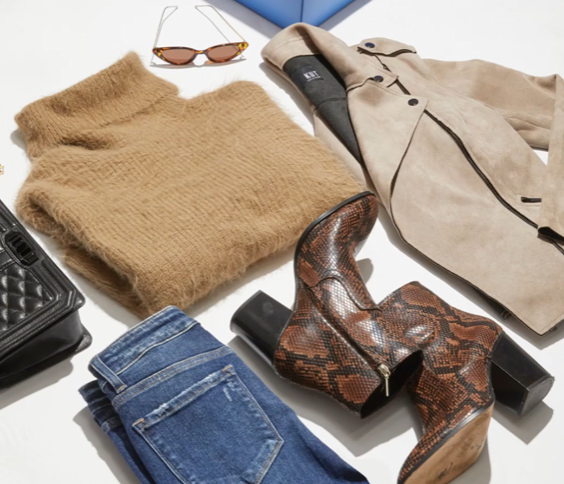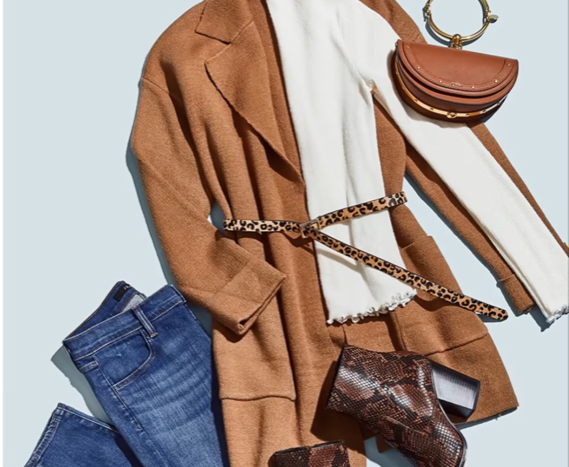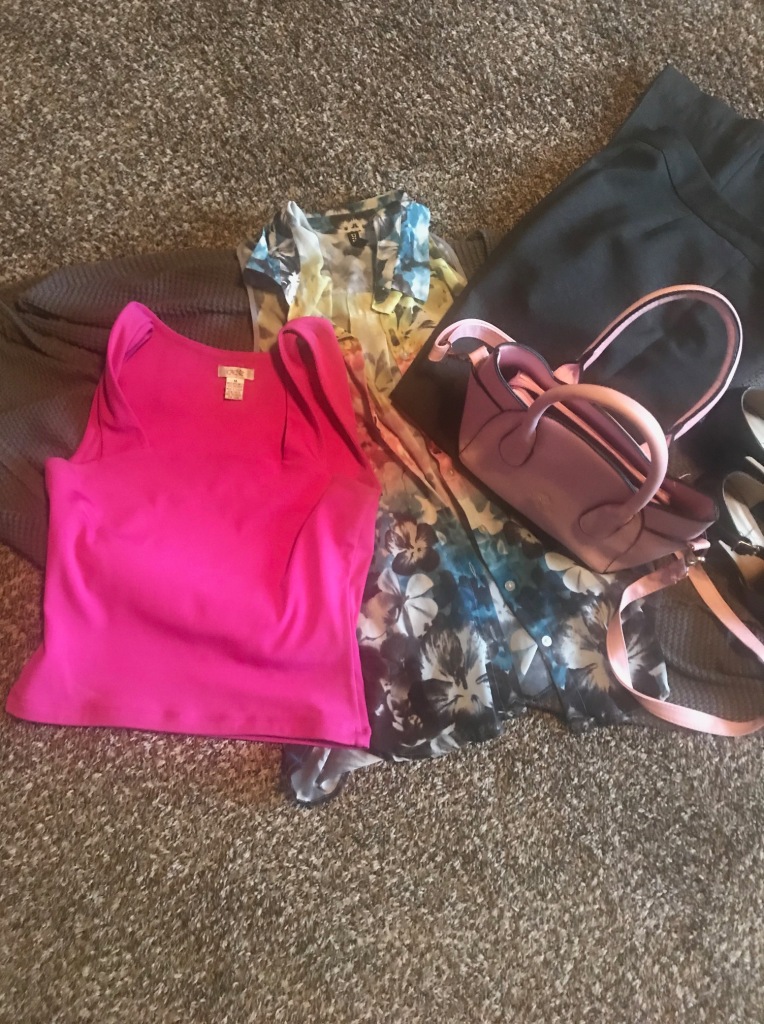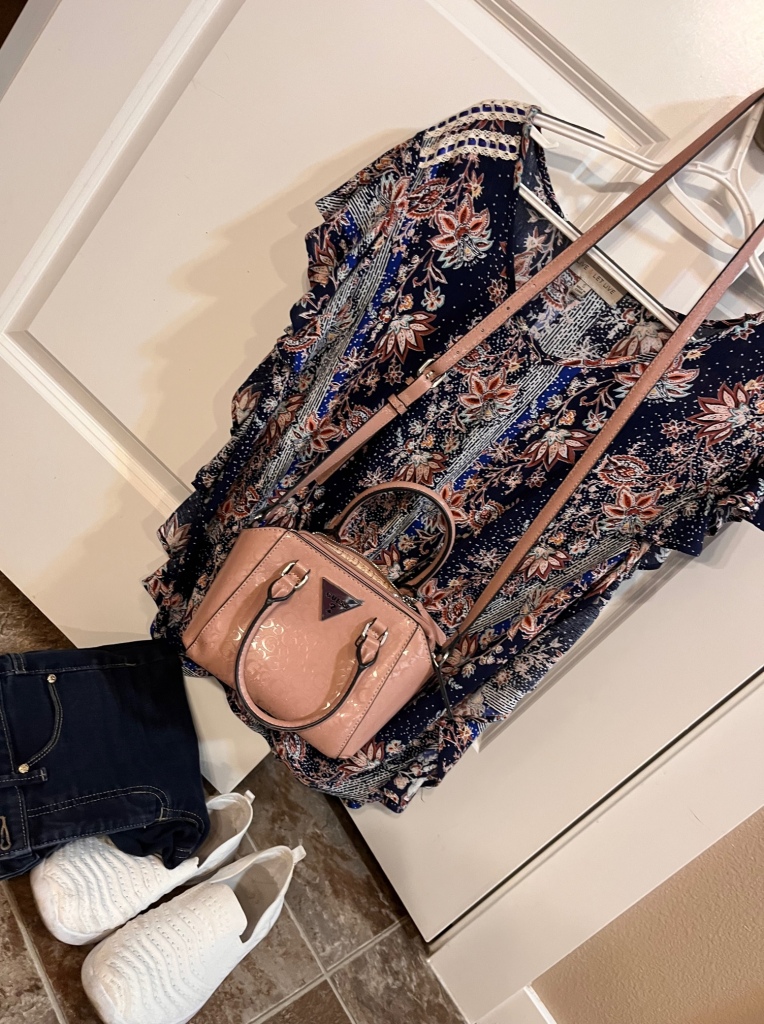If you’ve met me, you know I’m a fashionista. If you know me, you might say I’m a shoe slut, a tote tart, a closet-curator. I love fashion.
The truth about fashion—whether in your home, on your body, or within your body of work—is that art lives within polishing, revision, the details.
I loved fashion as a teen, and because I left home at 14ish, affording the “look” was not a budgeted item. What I had, back then and still, is my creativity and resourcefulness. With my small nest of mostly denim, I could invent a signature, repurposing—shorts into skirts, tees into tanks—with scissors and few quick stitches.
This most likely began in first grade when I felt bad for my Baby Tender Love.
She had one outfit. We had no money. Our family carried mostly dysfunction and chaos. Dressing that doll became my obsession. I’d found a basket or box or trash bag full of scrap cloth and I dug through an old sewing basket for buttons, a needle, some thread.
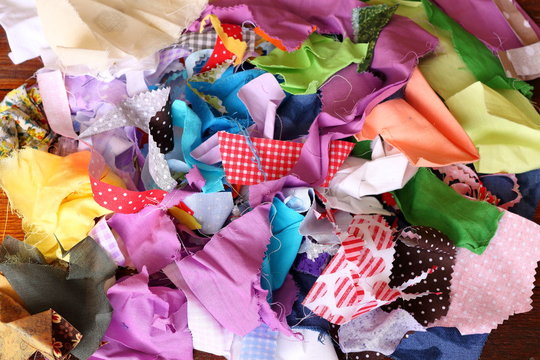
Baby Tender Love’s “dress” consisted of one piece of material, arm holes, and a button. I traced the original on a sheet of paper. I’d no clue that I created a pattern. I used and re-used that sheet on every cloth big enough. I probably used scissors for the first time in my life. At least adult ones, sharp and pointy and too big for my hands. I over-cut at first. I remember my tears, the heat of my face, the tossing away of pretty material I thought perfect for my impoverished doll.
Threading that needle to sew a button turned me into a tornado. Perhaps my first symptom of drive, determination, or my ability to singularly focus on one small task. Most likely coping method I still use today. I can’t remember how long it took me to teach myself these skills. I do remember the stack of clothes my doll had in the end and, later, my adopted sister, Tina, asking me where they came from.
I made them.

In middle school, a teacher hired me to purchase clothes for her small boutique in Wheatfield, Indiana. The teacher, older—probably my age today, late 50’s—chose me because she loved my style, because she wanted a young, fresh “look” in her store. I paged through catalogs, the pages brimming with ankle boots, short skirts, and one-piece jumpsuits patterned in flowers.
I loved this job. This summer job. My payment in clothes.
Once I joined the military, fashion became an identity. When you live in a uniform—dress blues, combat fatigues, charcoal chemical warfare suits—maintaining a sense of self feels much like oxygen. I finally had money. It felt like a ton of money. Food and shelter, covered by the USAF, meant I had extra money. I shopped. I shopped often. Sometimes I stole items. Sorry, a different essay for a different day.
Scarves, totes, belts, and shoes.
At the time, I barely topped the scales at 100 pounds. I struggled with Anorexia and Bulimia, though I’d tell you, then and now, I’m fine or I burn fat when stressed. I told myself this too. I believed this. And because of my body-shame, wardrobe offered a place to hide. I could mask my thinness in layers. I could also keep my body safe from predators. My outfits became bulky, but still, fashionable, at least to me.


During my military stint, I journaled, almost daily. I did not deep dive. I did not seek an understanding of self. I avoided any emotionally charged idea. Instead, my journals appeared like a catalog, capturing events, places I journeyed throughout Europe, sketches of the world around me.
Outside of me.
I kept everything outside of me.
Including me.


There’s a long narrative between my exodus from the military in 1993 and my entrance into pageants in 2004. Most of this time has little to do with fashion or writing and more to do with surviving. What you need to know about this decade:
- I hid in my walk-in closet to write at 3 am because my then-husband thought writing too much a luxury and my time should be spent on my chores—caring for my sons, keeping our home pristine, looking perfect.
- One “requirement” of my then-husband was for me to look perfect—body, hair, make-up—so, after I wrote, at 5 am, I put on my face and a cute outfit. I looked good. I felt numb.
- During this time, I taught and trained and coached high-level athletes at the gym. This offered the opportunity for me to keep up, keep low (body fat), keep going.
I didn’t understand the complex duplicity of my life. In the military and later. I didn’t understand how wardrobe defined who I needed to “be” at any given moment.
Spandex = Gym Diva
Gown = Pageant Queen
Uniform = Disciplined Airman
Fashion Outfit = Perfect Wife
When I became Mrs. Idaho International in 2004, a dear friend and incredibly talented fashion stylist dedicated months to helping me re-shape and re-define my image.
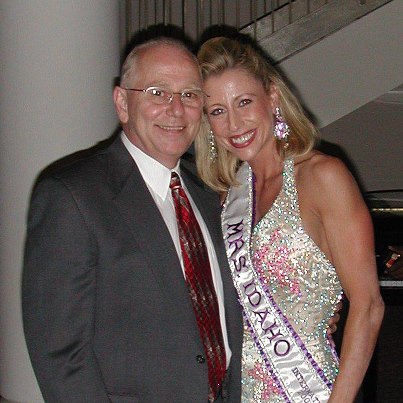
Her first challenge?
Cutting my wardrobe. Most of my clothes were two-, maybe three-sizes too big. I still suffered with body dysmorphia and occasional episodes of Bulimia. I thought myself “healed.” Thought that this was as healthy as I would be.
She gathered clothes that did not “fit,” hanging them on one side of my closet.
I took to a bottle of wine.
I feel this is where writing and wardrobing clearly intersect.
Here, my “base” wardrobe simulates an early draft. Here, we cut and cut and cut. Take away everything that does not belong.
- Images that are out of range of theme or tone.
- Repetition that fails to build or shift the narrative.
- Wandering story lines.
- Excessive words—articles, adverbs, etc.
- And my favorite cutting—weak verbs.
And yes, shaving a narrative feels like revamping my wardrobe in 2004. Some days I want to reach for a bottle of wine. It’s uncomfortable. I’m attached to words and shoes and comfy sweatshirts. But I’ve learned that cutting at the foundation allows me to build something that truly works—on the page and my body.
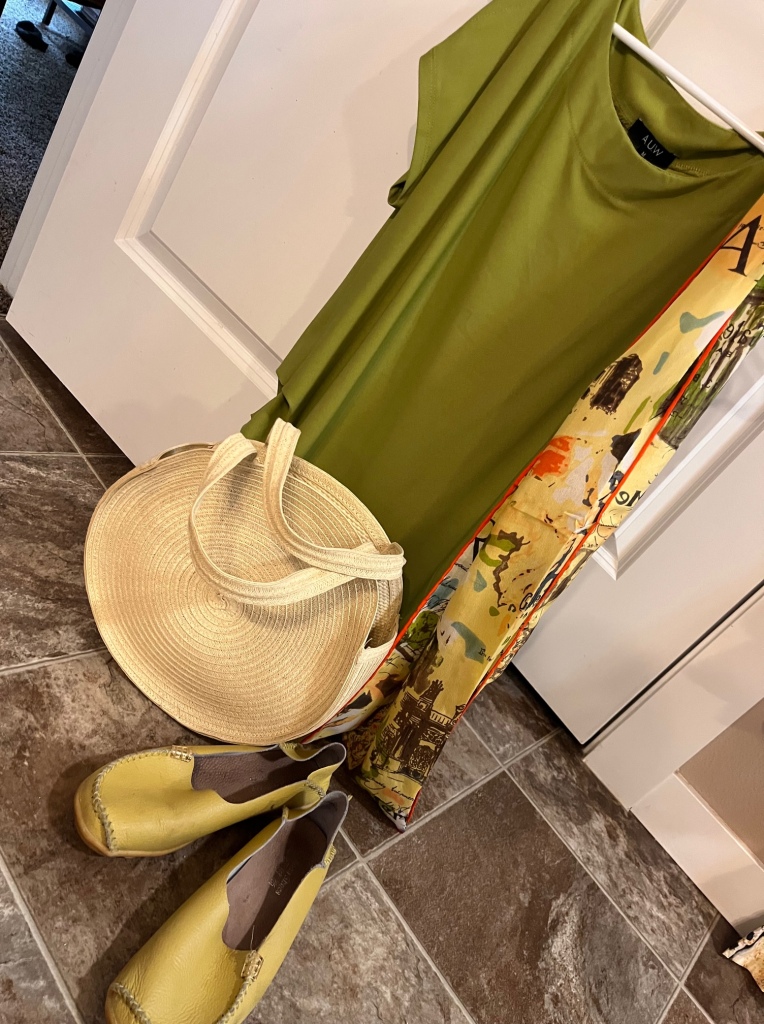
Much like this off-green blouse. The arrangement is simple. A scarf, shoes one tone lighter, a woven handbag.
I could keep adding to this ensemble—pending on the weather—an off-white denim jacket, sunglasses, a hat.
This is true of penning a decent essay. You could keep adding. But it depends. Weather matters. Is there a storm brewing or a breezy beach day on the horizon?
Back to 2004 and re-defining my style. My fashion stylist-consultant-counsellor’s next step involved color. The foundation here is a bit Socratic—Know yourself. Which colors enhance your complexion? Which drains? This is both simple and not-so-simple. The stylist held fabric swatches near my chin beneath great lighting (meaning: NOT fluorescents). I could see the difference in my skin, how my tone shifted based on hue alone. Pastel and jewel tones offered a healthy sheen for me. Earth tones brought a jaundiced-death look.
We decided I’m both a Spring and Winter.

My one earth-tone exception was camel. I look amazing in camel. Teal became another signature color for me. Odd enough, both colors were absent from my wardrobe. My stylist found a camel suit, top coat, slacks. Teal blouses, tanks, sweaters. The challenge for me was not the shades but the size. I felt awkward and exposed wearing clothes that cinched my waist, tugged my thighs, showed my body.
My conflict? I love fashion. I dislike male attention regarding my body. How can these two co-exist peacefully? How can I live comfortably in my skin AND wear clothes I love?
I do not have an answer.
I still struggle with this today.
But writing teaches me about this.
Think FORM.
Form in wardrobe moves past size and color, focusing on body shape and how to enhance it. For example, a V-neck looks fabulous on a large-busted form. A cowl or turtleneck on the same body type is less flattering. Necklines, collars, hem and sleeve lengths, trouser leg width, all of these details matter.
Using form in writing is parallel to this.
The paragraph might work well, even read well, much like the turtleneck, but a list could serve the piece better, like the V-neck. It isn’t a matter of right or wrong. Think great versus good. I think of form in writing as our greatest opportunity. We can alter that same paragraph into a Haiku or short staccato sentences or one long stream of thought. We can push the entire structure into a poem, a hybrid, a flash, or long-form. The critical element in form selection in writing equates to form choices in wardrobe – is this the best shape for this body?
I witness writers pushing poetry into the middle of a narrative when the project doesn’t call for that shift. The pressure of hybrid form and acceptance into a literary journal will sometimes force an artist to add an element that goes against instinct. The same is true of wardrobe—social pressure, approval, acceptance can influence us, pulling us away from our guts and into the darkness of…fads. Of course, art is subjective. The hope for the artist, the human, is to make choices that honors their nature, their desire.
In writing, we begin again as well. Walk through, remove the lines that no longer serve.
Return to texture.
Think of white space on the page as the first layer of texture in writing. Here, we decide. Do we begin in scene? In dialogue (which is in scene)? Does the sentence stand alone? The word? These choices alter the feel of our work. These choices change the way we breathe in our words.
Of course, wardrobe holds texture too. In 2021, I fell ill with an autoimmune disorder, another layer on top of my already dis-abled body. I returned to my closet. I walked through, much like my stylist taught me. I touched every item, massaging fabric between my palms, on my face.
I kept clothing based on touch alone—the softest, the silkiest, the items that felt like butter. I love blossoming trousers (which work for my body-type) and breezy sweaters. Maybe I long to feel like a petal or a butterfly. Maybe I’ve this need because my body holds so much pain.
Soft against hurt feels a salve.
This is true of word-texture. How does a word feel rolling off the tongue? I find the use of beautiful language to describe the ugly and difficult can offer less friction, it goes down smoother.
I think of Hannah Harlee’s incredible styling—elegant, classy—and her choice of texture. Butter-love!

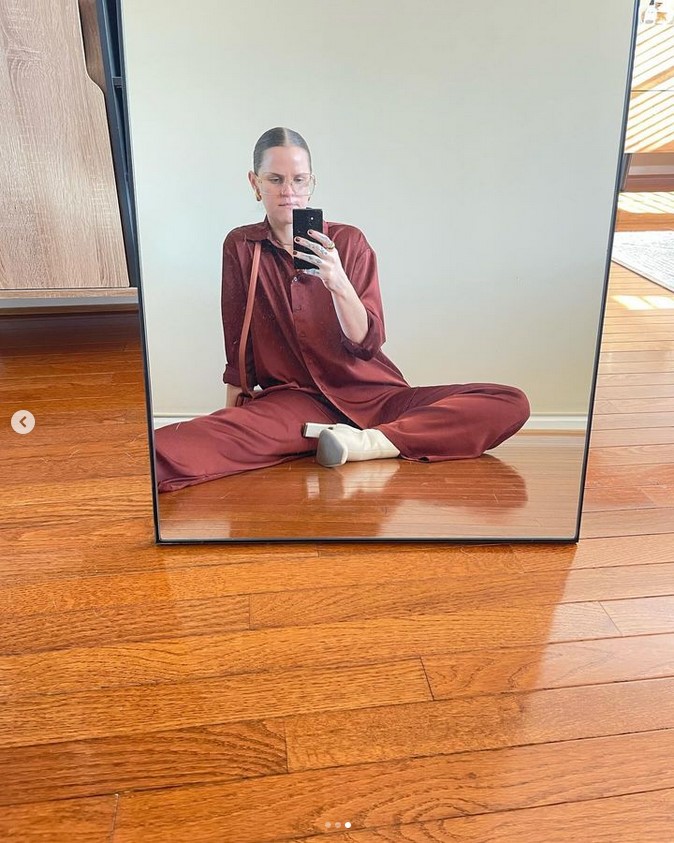

What I fail to mention in this essay, Hannah captures perfectly—the rest of the product. Lips. Hair. I mean, look at her red lipstick contrasted with this white ensemble. Perfection.
Again—this mirrors writing. You can manage a gorgeous, even streamlined narrative, but if you don’t land the ending (the rest of the product), you’ve failed.
If you read Hannah’s essays, you’ll see her alignment between wardrobing and writing. Elegant. Classy. Specific. Butter. Love. Nailing-It-Stellar-Endings.
For me, the fun, the true adventure—in wardrobing and writing—lives in arrangement.
As I arrange an ensemble, I begin with my lower half—leggings, capris, jeans. Dress? Skirt? And, like Hemingway’s reminder, don’t forget the weather. Idaho Spring and Fall offers continuous shifts in temperature—snow to sun within the hour—so layered-dressing is a must.
My selection continues—blouse, camisole, sweater.
This process resembles line breaks, enjambments, punctuation—em dash, semi-colon, period?
From each break, I move words, a sound-by-sound exchange. I focus not only on the best word, but the best sound. This attention to sound is like the attention required for true style and taste.
The small speck of teal in a shirt might become my main accent—my focus color—choosing shoes or totes or bangles to pull that tiny hue to the surface. To grab notice of something seemingly spare.
Words work this way.
The soft S. The hard K. I search for music.
I’ll rarely repeat an ensemble – on the page or on my body.
This does not mean I avoid repetition. I seek re-invention with every piece, maintaining an art form all its own. In a collection of essays or poetry or hybrid work, this array offers range. THAT form served THAT part of the narrative and only for THAT moment. Or, perhaps, a repetition for THAT type of moment throughout?
When I write the way I wardrobe—I maintain a sense of abandonment. I want to feel surprised. I want to love the process AND the end result. I long to linger, to delight, in both forms.
Wardrobe and writing inform one another. The more you pause for details in the small, daily matters, the more you include details in your writing. The more specific and detailed the writing, the more universal the meaning behind the words.
This type of writing (and living) is a mindful, intentional approach. There’s a sense of zen and grounding and earth within it. There’s also a deeper sense of self, of gratitude. I could compare writing to every aspect of my life—shopping, cooking, gardening, sleeping, loving, hurting—they continuously intersect, overlap, and instruct one another.
For the writer, writing is not a separate category of life. We find our stories in the every day. And should our creative well run dry, we can run our hands along a seam, trace the flower in a pattern on a sleeve, remember that the detail, the selection we made from the start of the day can be a major contributor to our art.
~
NOTE: In April 2023, I underwent a double mastectomy. After I healed, I returned to my wardrobe and undid the necklines, altering and revising yet again into something more in alignment and true to me.
If you’d like to order my FREE Zine, A Little Guide to Clothes I Wear All Day, just send a SASE to: Rebecca Evans
PO Box 373
Star, ID 83669
(with gratitude to the Idaho Commission on the Arts and The National Endowment for the Arts in making my Zines a reality).
Image credits: From Instagram, public domain, 2024, Ageless, Stitch Fix, Dailylook and, with permission, Hannah Harlee. The remaining images are from my life.
You can find Hannah’s LookBook on Instagram at: @hannah_a_harlee and info regarding her Literary Journal, Art Wife, @artwife_mag.
Hannah’s websites: https://hannahharlee.com/ and https://www.artwifemag.com


